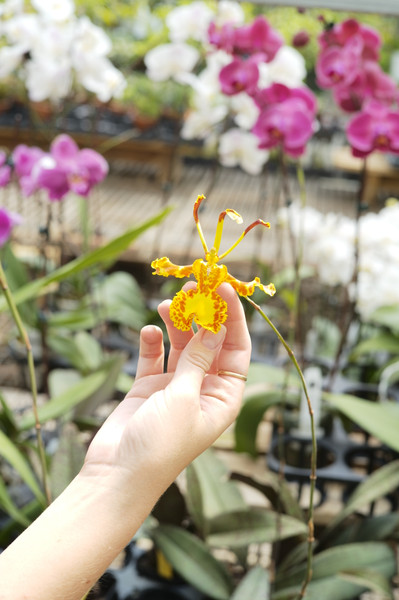Orchid Care and Repotting
Posted by Jessie Jacobson on Sep 25th 2023
Orchid Care and Repotting
Orchids are some of the most beautiful and often most misunderstood plants. They are actually quite easy to care for and enjoy. Here is the scoop on caring for these beautiful plants.
Soil
Orchids are epiphytes which means they grow on the trunks of trees in the rainforest, gathering moisture and nutrients from the surrounding humid air. Epiphytes, including Orchids like a barky growing media, no actual soil needed. The perfect blend is Espoma’s Organic Orchid Mix.
Water
Like most plants, orchids prefer to be watered in the morning so that their leaves have time to dry out throughout the day. Water about once a week with clean water - distilled or rainwater is a good choice. A sign that orchids need to be watered is when the leaves start to wrinkle. At Tonkadale, we don’t recommend watering with ice cubes as the cold water puts strain on the roots and can potentially cause damage.
Fertilizer
Orchids like to be fed weekly when watered. If you like, you can pause on the fertilizer when the plant is in bloom. A specialty orchid fertilizer is your best bet. We like Schultz Water Soluble Orchid Food.
Temperature
Cooler nighttime temps of 55-65 degrees help new flower spikes emerge. When a new spick appears, you can return to normal setting of 70-80 degrees daytime temps and 62-65 degrees at night.
Light
Orchids like bright, indirect or diffused light. A south or east facing window works best. West is often too hot in the afternoon and north facing windows may not allow enough light.
Repotting
Orchids need to be repotted for two reasons. First, their potting mix breaks down over time and the nutrients become depleted. This is evident by dead or dying roots. Secondly, repot your orchid if it is outgrowing its pot or if a “pup” has emerged. Orchids like to be planted in a container with good air flow. Specialty orchid containers have holes in the side to help mimic their natural environment.
Flowering
An emerging flower spike looks like a mitten on the end of new growth rather than the rounded tip of a root. Their stunning flowers last 2 to 6 months before dropping. Orchids can bloom 2 to 3 times per year once mature. After the flowers drop, cut back the stem at the base. Once your orchid is done flowering, the plant will generally go into dormancy lasting 6 months or so. During this time, the leaves are gathering energy to produce another flower.
Troubleshooting
Root Rot - not always from overwatering, usually due to lack of air flow to the roots.
Several leaves yellowing or drying up – can indicate stem rot which is a fungal infection that can be hard to treat. Pinpointing exactly where to treat as well as getting the fungicide to the right place can be difficult to do. Pooling water in the leaves and gaps will normally be the culprit. Prevention is the best medicine.
Spot Blemishes on the leaves could be from sun burn as orchids like bright rooms but not always direct sun for long periods. Think of where they grow, under the canopy trees in the rainforest!
Bud Blast - many factors can contribute to buds drying up and falling off without opening including: Room too hot? Light level too low? Plant too dry or wet? Root Rot? Using softened water instead of clear water. Too much fertilizer. Getting hit by a cool draft. Plant near strong fumes such as new carpet, refinished woodwork etc..
Always Growing
Orchids are often thought of as difficult plants to grow, but with a little care and knowledge, you will be rewarded with beauty beyond belief.
For more information about specific orchid varieties, check out our mini plant blogs!

